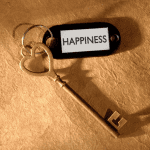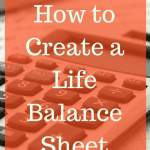Fear and Faith
Written by Rabbi Stephanie Shore
Yom Kippur Morning Sermon
High Holiday 2022/5783
8.6.22
Shana Tova!
This woman goes to her doctor complaining about her husbands anger, as he seems to just flip out on her and lose his temper constantly…
…the doctor makes a suggestion, “Ok, here’s what I want you to do, anytime that you feel like your husband is about to get flip out, I want you to go the kitchen, pour yourself a glass of water, and then take a swig and keep swilling it around your mouth until he calms down”…
The woman, puzzled, but in agreement says “I’ll give it a try, thank you doctor”
2 weeks pass by and she goes back to her doctor and says “that suggestion of yours worked like a charm doctor, anytime my husband became angry, I just swilled the water around my mouth like you said and he calmed down, how in the world does a glass of water do that?”
And the doctor replies “the water itself doesn’t do anything; I think you’ll find that it’s keeping your mouth shut that does the trick!”
We are living in a world where anger is apparent everywhere. We can see it in the polarity of politics, the lack of compassion and understanding between people and the absence of personal responsibility manifesting itself through blame.
Many of us might find ourselves ‘holding our tongues’ or reaching for that glass of water the doctor had suggested in our story.
We are aware that anger is a detrimental emotion. On WebMD we read that, “Chronic (long-term) anger has been linked to health issues such as high blood pressure, heart problems, headaches, skin disorders, and digestive problems. In addition, anger can be linked to problems such as crime, emotional and physical abuse, and other violent behavior.
But what is anger exactly? The Oxford dictionary defines it as, “a strong feeling of annoyance, displeasure, or hostility.
Through the years however I have come to understand and believe that anger is a secondary emotion ; it can stem from feelings of frustration, hurt, annoyance, or disappointment. It is a normal human emotion that can range from slight irritation to strong rage.
In contemporary Judaism, in a teaching attributed to Rabbi Abraham Isaac Kook, we learn, “When anger is a mode of life or when expressed in an unjustified manner, it is prohibited by Judaism. But if a person is wronged, he or she is allowed to express their natural feelings, including anger.”
It is not realistic to think that we will NEVER become angry however it is how our anger manifests itself that is the true measure of our character.
Victor Fankl, famously said, “Between stimulus and response there is a space. In that space is our power to choose our response. In our response lies our growth and our freedom.”
Therapists advise us to remove ourselves from a provoking situation in order to calm down, assess the matter from all angles and restore peace. But it is not just a therapeutic experience. It is a religious experience. When we take the time to think things through, we find the G‑dly perspective. Without even realizing it, we uncover the cosmic blueprint of the event.
You see, G‑d isn’t found only in sacred times and holy texts. G‑d is found in every element of the universe. When you step away from anger, you find interconnectivity. And in the process, you find G‑d.
When we have the presence of mind in a moment of anger to give ourselves the ‘space’ to choose a response we can then dissect our anger and pinpoint from where it is coming. Are we feeling frustrated, hurt, annoyed, or disappointed?
I want to simplify that question for you in this way. Frustration, feeling hurt, annoyance and disappointment all come from one root emotion which is fear.
Reb Nachman of Bratzlav said, Kol ha’olam kulo gesher tzar me’od; vaha’ikar lo lefached klal. “Know that a person needs to cross a very very narrow bridge, and what is essential is that one should not be overcome by fear].”
In her sermon, “The Whole World is a Brief Bridge’” Rabbi Ora Nitkin-Kaner writes, “If the whole world is a very narrow bridge, the only reasonable response is to live in fear! If you see the world as a ridge between two chasms, how can you be anything other than afraid? And yet Rebbe Nachman seemed to be saying: The whole world is fearful, fear-filled, and? We should have no fear. This feels like a maddening puzzle, suggesting a type of inner transcendence as unlikely as a levitating sukkah.”
If we study the lyrics closer though we will find that Rebbe Nachman may not have actually said, ‘lo lefached klal’ –he’d actually written ‘lo yitpached klal’ – that we should not make ourselves afraid.
These two possible messages from Rebbe Nachman seem to align with the two types of fear we all struggle with. The first type is basic fear, which in Hebrew is pachad. Pachad is fear on its most primal level, fear that spurs us to meet our basic needs for food, shelter, life. Pachad is key to our survival.
The second type of fear is hitpachdut, or worry. Hitpachdut is the fear of change, fear of anticipated losses, fear that the world we anchored ourselves to is becoming unmoored. Hitpachdut is the fear that curls up our stomachs and feeds on itself.
Both types of fear, pachad and hitpachdut, crop up again and again in the Torah. But they’re expressed most personally and poignantly in the Book of Psalms.
Rabbi Nitkin-Kaner also writes, “you’re probably familiar with psalms that celebrate nature, or psalms that praise God. But a sizeable proportion of the Book of Psalms is actually dedicated to expressing fear. So, we have 3,000-year-old poems in which the poet writes about being terribly sick, bent double with pain and afraid of dying. And we have poems in which the psalmist worries about enemies attacking without warning. And we have descriptions of a world that once seemed ordered now turned upside down, and the prayer, “If only I had wings like a dove, I would fly off and find rest in the wilderness…refuge from the streaming wind and the storm” (Psalm 55:7-9).
We can see from the Book of Psalms that our ancestors didn’t shy away from naming their fears. They described the world as it really was. They refused to pretend. And they insisted that their fears were a proper topic of conversation with the Holy One.
Why then do we have difficulty owning our fear and only allowing ourselves to express it through anger and it’s emotional relatives? Are we afraid it will make us seem weak? Ill prepared to handle life situations? Are we convinced that if we react in angry ways, we will prove to ourselves and others that we are unmoved, unshaken by the vicissitudes of life?
If this is the case, we are missing the mark. It is ok to experience fear as long as we don’t linger in its presence for too long. This is easier said than done. The point is to relieve ourselves from fear, by coupling it with something or else.
The opposite of fear is confidence or calmness. In religious terms we call it faith. There is an old proverb that says, “Fear knocked on the door, faith answered and there was nothing there.” This would lead us to believe that if we are truly faithful we would not be fearful however, It is my contention that we can be both afraid and have faith at the same time. They are two sides of the same coin.
Fear is when an outside circumstance sparks the idea that we are going to lose something. Faith is an inner feeling that no matter what happens on the outside we will be ok. It is a confidence that things work out not the way may want them to but the way they are supposed to.
In an article entitled, “The Kabbalah of Anger,” Rabbi Lazar Gurkow writes, “The universe was created by G‑d with a single burst of creative power. Although G‑d’s infinite light manifests differently in each element of creation, the universe pulsates with that unifying divine energy. Every minute detail is part of G‑d’s cosmic blueprint, integral to the whole. At root, it is all one.
Faith is trust in the cosmic blueprint. This is not to say that in the face of atrocity we sit back and say, “This must be Divine Will.” No, we don’t but that’s another sermon for another time.
Faith in the spirituality of life is when we experience the vast and varied range of emotion and remain objective to the feelings derived from each of them. It is when we wear the world like a loose garment and at the same time participate fully in life. It is when we understand fear as a necessary emotion but not letting it rule our lives.
In the coming year let us be sure that there will be stimulation that we either see on TV, hear from a friend or experience first-hand. Let us remember to take a beat between stimulus and reaction so that our response can be one of faith. In this way we will be an “Or laGoyim”, a light to the nations.
Shana Tova!



